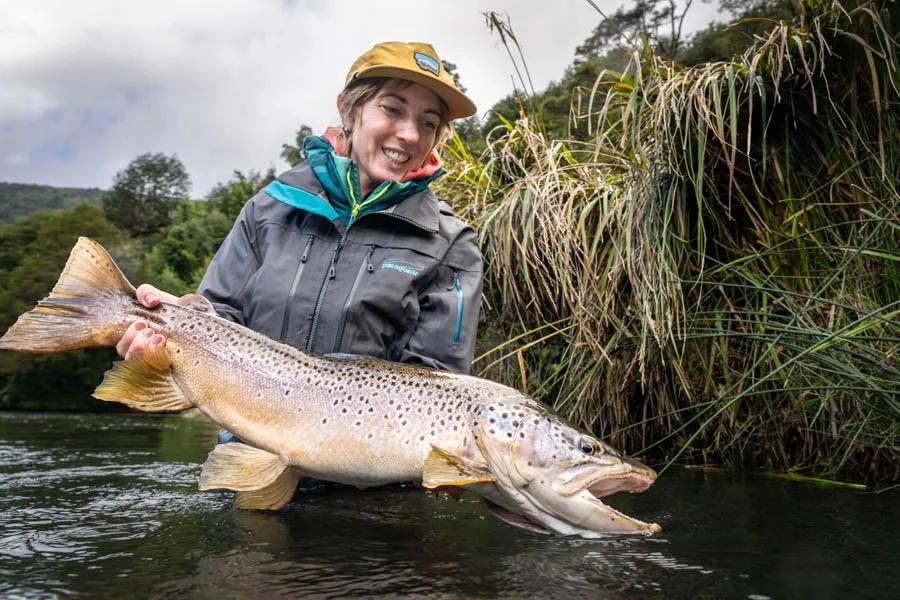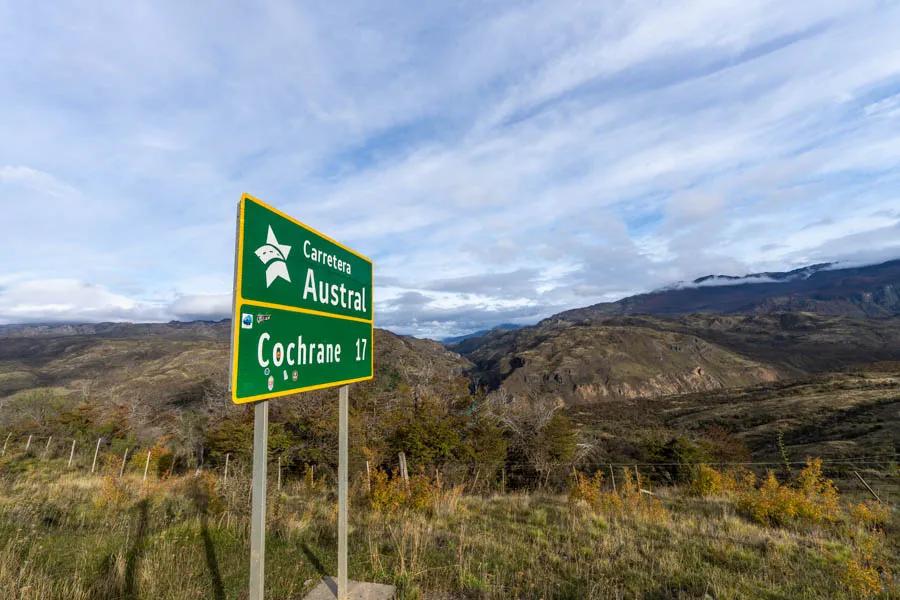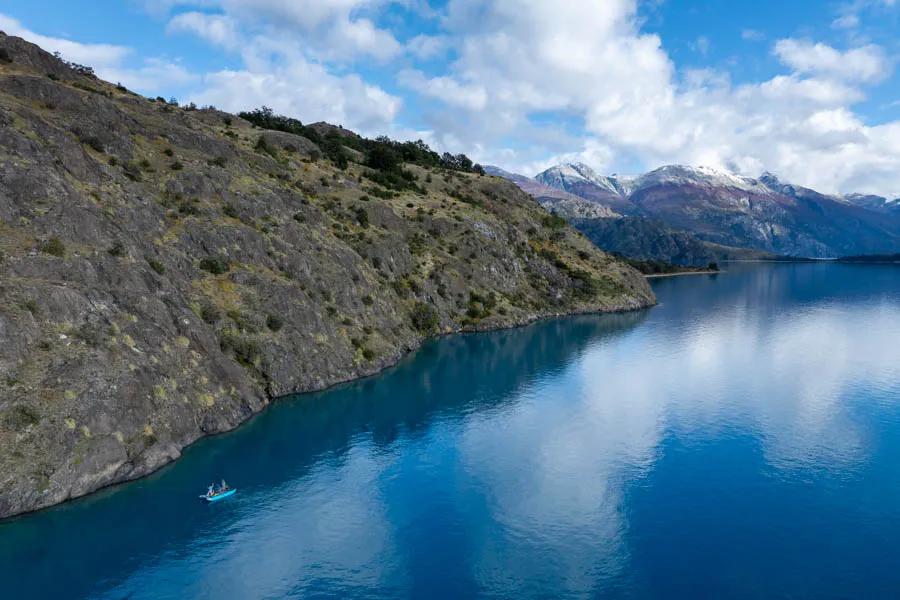
Fly fishing travel can take you to some amazing places. One of those spectacular places in the world to go fly fishing is the Patagonia region of Chile. With several world-class lodges, hundreds of miles of rivers and shorelines to fish, and an abundance of excellent fly fishing guides, this region has become one of the premier destinations for anglers looking for consistently great fly fishing trips. If you are considering your first international fly fishing trip, a fishing trip to Chilean Patagonia is a great choice. Here is Montana Angler's guide to picking your first, best fly fishing trip to Chile.
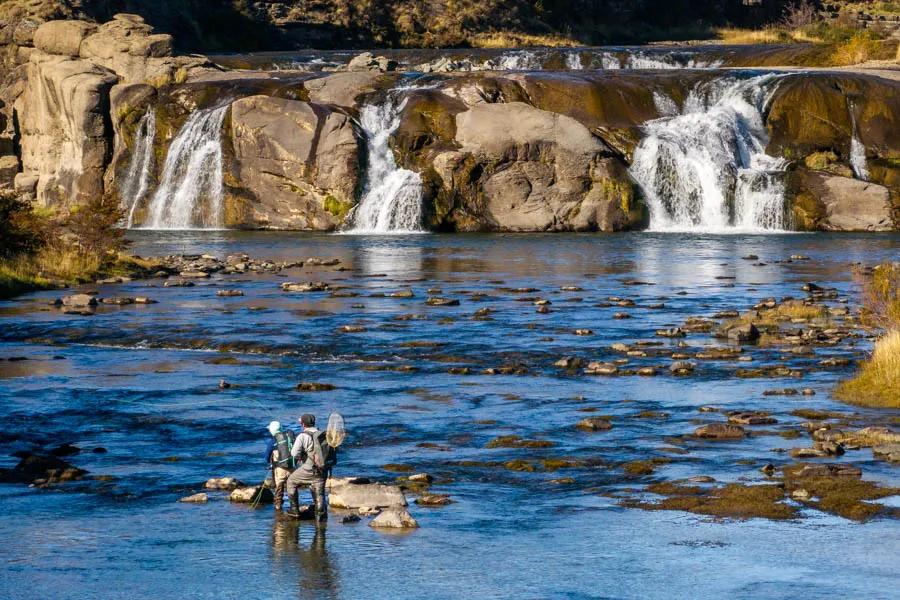
Getting to Chile
With plenty of daily non-stop flights from the United States to Chile, anglers have a variety of embarkation cities from which to choose. Additionally, with most flights from the United States to Chile being overnight flights, anglers can often arrive in Chile in the early morning and be at their destination lodge that evening, avoiding an extra day of travel. International flights arrive into the capital city of Santiago (pop. 7 million) and most domestic flights to destinations in Patagonia depart in the afternoon. Some anglers also choose to spend a layover night in Santiago to enjoy the metropolitan city which has some fantastic dining and culture options.
Regions of Chile for Fly Fishing
The main regions most first-time traveling anglers to Chile visit are the waters and lodges around Coyhaique and the waters and lodges near Lago Yelcho/Rio Palena. Because these two regions offer several lifetime's worth of fly fishing opportunities, even anglers who travel to Chile often rarely venture outside of these regions. Recently, with the opening of Patagonia Baker Lodge, the Cochrane/Baker/Lago General Carrera region is also quickly becoming a legitimate destination for a first-time visitor to go fly fishing in Patagonia. With distinctly unique characteristics of waters, these three regions offer a variety of angling trips that exist in only a few places on the planet.
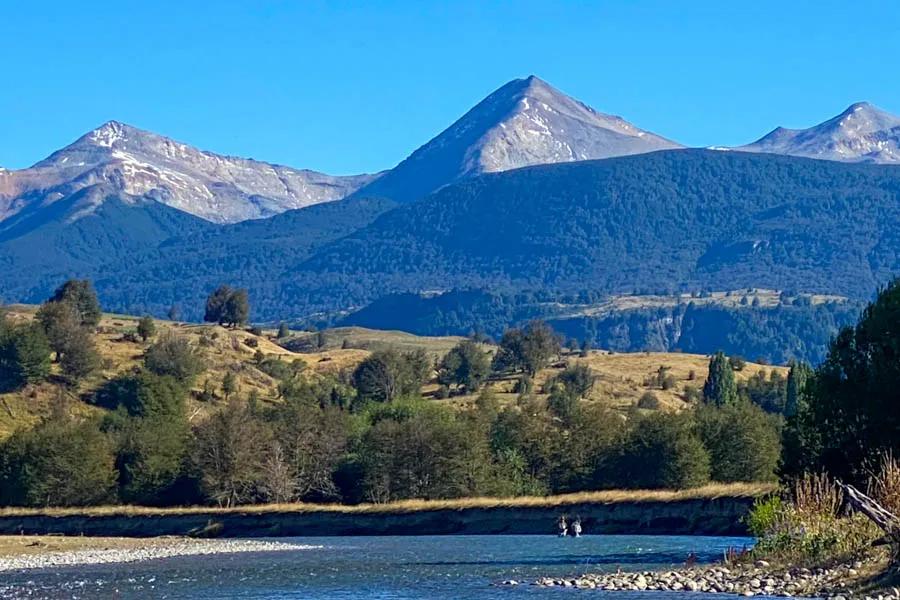
The Coyhaique Region for First-Time Traveling Anglers
With so much water so accessible in this region, some of the country's best instructional guides, and the greatest variety of rivers, creeks, and lakes this region is a great choice for a first-time trip to Chile to fly fish. Coyhaique sits where the rugged fjordland of Chile's Pacific coast gives way to the more arid Andean steppe and eventually the pampas of Argentina. In this region regardless of weather--rainstorms or rugged winds--the guides here can always find a place to fish that is sheltered from the storm. The small creeks and protected canyons are fished when the wind howls too strong and the lakes, lagunas, and spring creeks are the go-to's if heavy rains cause the larger rivers to blow out.
This region has the most amount of angling variety of any region on the planet and because of the massive variety of waters, it has the longest angling season of any region in Chile. On one day it can feel like you are fishing the steelhead rivers of the Pacific Northwest or Alaska and the next day you it feels like you are casting dry flies on the trout streams of Montana or Yellowstone National Park. In the middle of all this fly fishing goodness are purpose-built, world-class fly fishing lodges with some of the most passionate and dedicated fly fishing guides in all of Patagonia.

The Yelcho, Palena, and Futaleufu Region for First-Time Traveling Anglers
The waters in this region are framed by steep mountainsides and hanging glaciers. For anglers that enjoy fishing almost exclusively from a boat, this region is surely to top the list. With some of the longest-running lodges in all Patagonia, the guides here know how to find fish. Traveling anglers have been fishing this region for decades and with its proximity to the Pacific Ocean the region has the distinct feel of southeast Alaska or the Pacific Northwest. The lodges here have a long and loyal following for good reason--the waters here have a lot fish.
For first-time traveling anglers, this region provides seemingly endless opportunities to chase fish from a boat. The light fishing pressure and productive waters in this region make it a hot spot for anglers targeting trophy trout on the fly and numerous trout over 10lbs are landed by anglers throughout the season. This region of Chile offers some of the world's best trophy trout fishing in incredibly productive lakes and lagoons. Whether sight casting to huge fish patrolling weed beds or swinging for the fences with big streamers, the lakes, lagunas, and large rivers in this region provide plenty of fish amidst breathtaking scenery for even the most well-traveled angler, much less the first-time traveling angler.
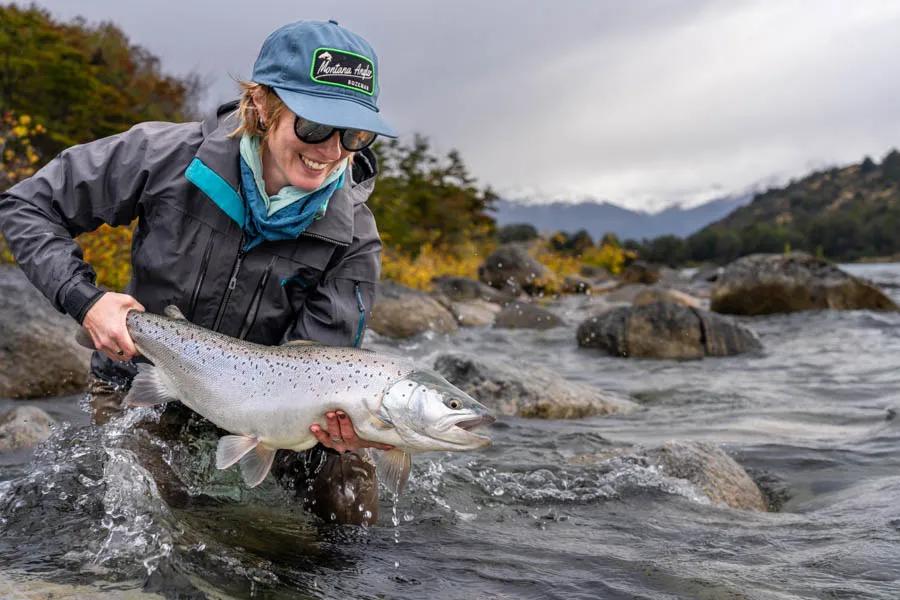
The Rio Baker, Cochrane, and Lago General Carrera Region for First-Time Traveling Anglers
For decades this region of Chile was logistically very difficult to access. As more and more of the Carretera Austral became paved and infrastructure to this remote region expanded, anglers were able to experience the broad fly fishing options. The crown jewel here is the Rio Baker flowing out of Lago Bertrand and down to the large water fall before the Rio Baker joins the Rio Neuff. The Rio Baker is the largest river in Patagonia by volume and feels much like a large river in Montana like the Yellowstone or the Missouri Rivers. However, unlike the Yellowstone River it rarely is too high or too muddy to fish. Because the Rio Baker drains Lago Bertrand it acts like a giant tailwater. The consistent flows and water temperatures grow some very large fish.
But the Baker isn't the only option for fishing in this region, there are a few other smaller creeks and rivers such as the Cochrane and the Jeinimeni and the largest lake in Patagonia, Lago General Carrera. It is still surprising that this region still remains slightly off the angling radar of most anglers heading to Patagonia...and that's not a bad thing at all...but as the region's reputation grows and travel becomes easier and easier, expect to hear more about this region. But for first-time traveling anglers to Chile a trip to this region feels much like a trip to Chile did 30 years ago. Unlike the ease of air travel to the Coyhaique and Yelcho/Palena regions with daily direct flights from Santiago and short ground transfers to the lodges, a trip to the Rio Baker region requires an extra step. Anglers traveling here overnight in Coyhaique and take a ground transfer through spectacular scenery or they can take a helicopter to shorten the drive.
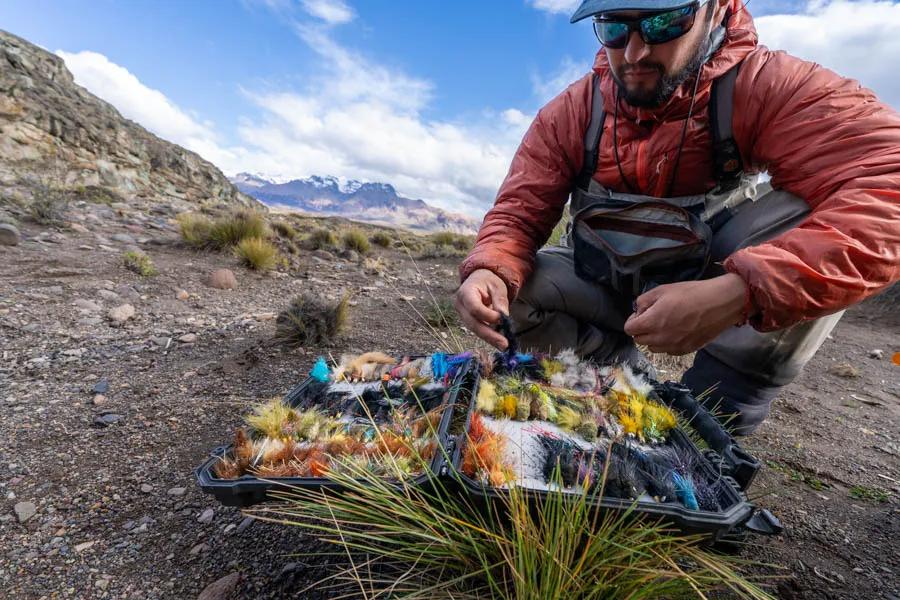
Gear and Flies for First-Time Traveling Anglers to Chile
If you are traveling to fly fish in Chile for the first time, understanding the gear needs is crucial. Like many international destinations, it is important to be as self-sufficient as possible--that means be prepared to bring your own rods, reels, fly lines, flies, tackle, boots, waders, and rain gear. The destination lodges that Montana Angler partners with all feature excellent fishing guides, but fly fishing gear in Chile is not as readily available compared to the United States. Many guides have special, custom-tied patterns that work locally but tying materials are hard to come by so do not expect guides to openly provide flies, so come prepared with a good selection of the flies listed below. Some of the lodges can provide boots and waders, but be sure to confirm all of that weeks or months before your trip.
Rods and Lines:
9-foot 5 or 6 weight with floating line
9-foot 7-weight or 8-weight with a sink-tip or full sink
Leaders and Tippet:
9 foot 0X to 5X
A selection of mono-filament and fluorocarbon in 0X to 6X
Rods and Lines:
9-foot 5 or 6 weight with floating line
9-foot 7-weight or 8-weight with a sink-tip or full sink
Leaders and Tippet:
9 foot 0X to 5X
A selection of mono-filament and fluorocarbon in 0X to 6X
Nymphs:
While not always the go-to for fly fishing in Patagonia, be sure to have some nymphs.
Beadhead Pheasant Tails in sizes 10-18
Lightning Bugs in sizes 10-18
Beadhead Prince in sizes 10-18
Pat's Rubber Legs in sizes 6-14
Assorted Midges in sizes 16-22
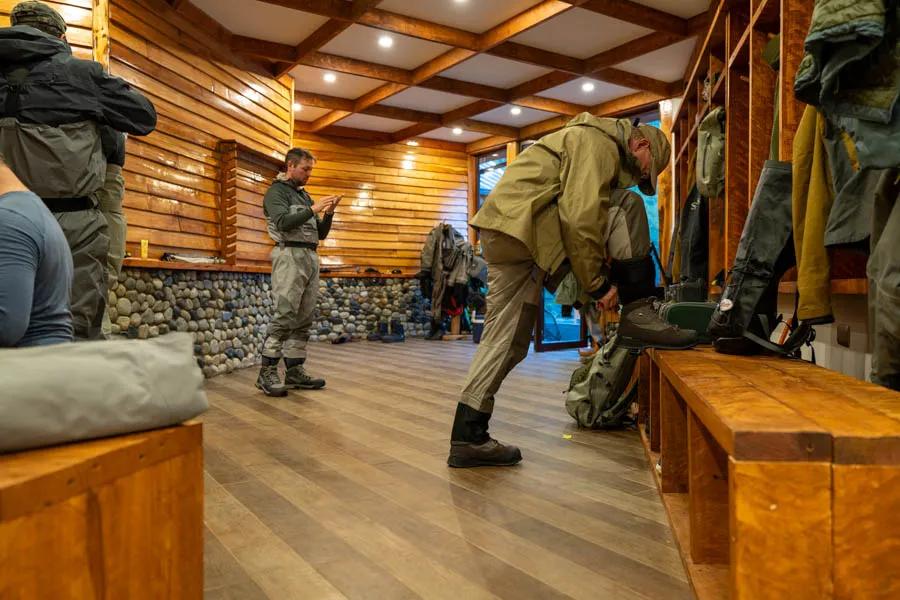
Waders, Boots, Clothing, and Additional Gear
With such a wide array of topography in southern Chile, being prepared with good gear is crucial to having a good trip. Over the course of a day of fly fishing in Chile anglers can experience sunshine, wind, rain, snow, and repeat. A nice warm day can quickly turn into a rainy cold afternoon. Implementing a quality clothing system is important. Use a layering system that allows you to have a high quality base layer, then insulating layers, finished off with a quality outershell that is fully waterproof. A good attitude only goes so far if you travel with sub par clothing.
Many of the lodges in Chile can provide waders and boots. Depending on your body size and the importance of form-fitting waders and boots, you may choose to pack your own waders and boots because you know what works best for you. When booking a fly fishing trip to Chile it is important to get answers to if or if not waders and boots are included and the inventory of sizes at your destination lodge. At this time, felt soled boots are still allowed in Chile but they must enter the country clean and dry.
A few additional things to consider: a wading staff if you plan to wade fish, quality polarized sunglasses--and a backup pair just in case. Sun protection in the form of hats or sunhoodies.
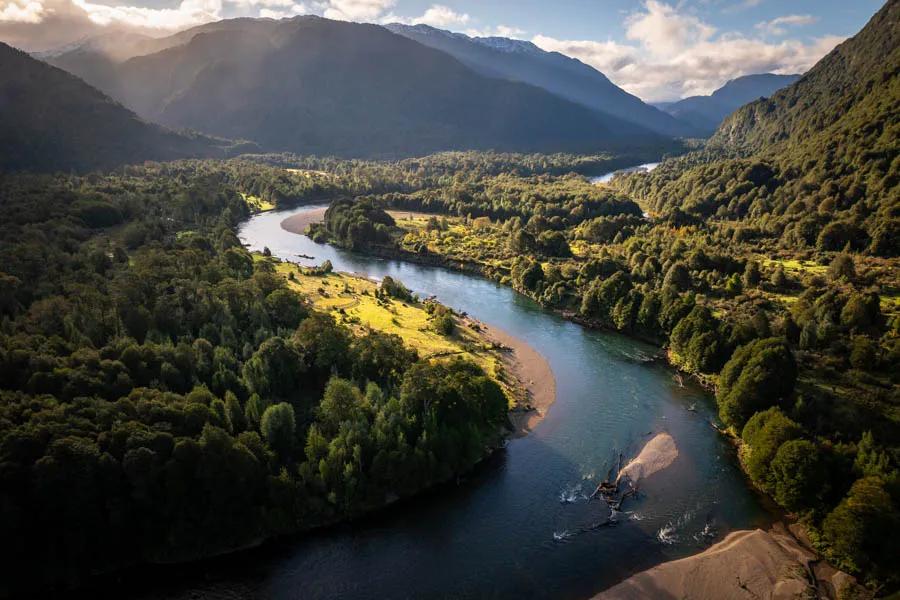
Some Final Thoughts for First-Time Traveling Anglers Headed to Chile
The world is filled with fabulous destinations for fly fishing trips. From the easy logistics of traveling to Montana to fish on an overnight camping or backcountry trip, to the other side of the world at a legendary New Zealand Lodge or the wilds of Mongolia, traveling the world to fly fish is one of the great appeals of fly fishing. Much like Montana, a fly fishing trip to Chile is often filled with variety of fishing options that are well-suited for any ability of angler. With the ease of travel to Chile and the increasingly supportive infrastructure, any angler looking for their first-time international fly fishing trip should seriously consider Chile as a prime destination.

